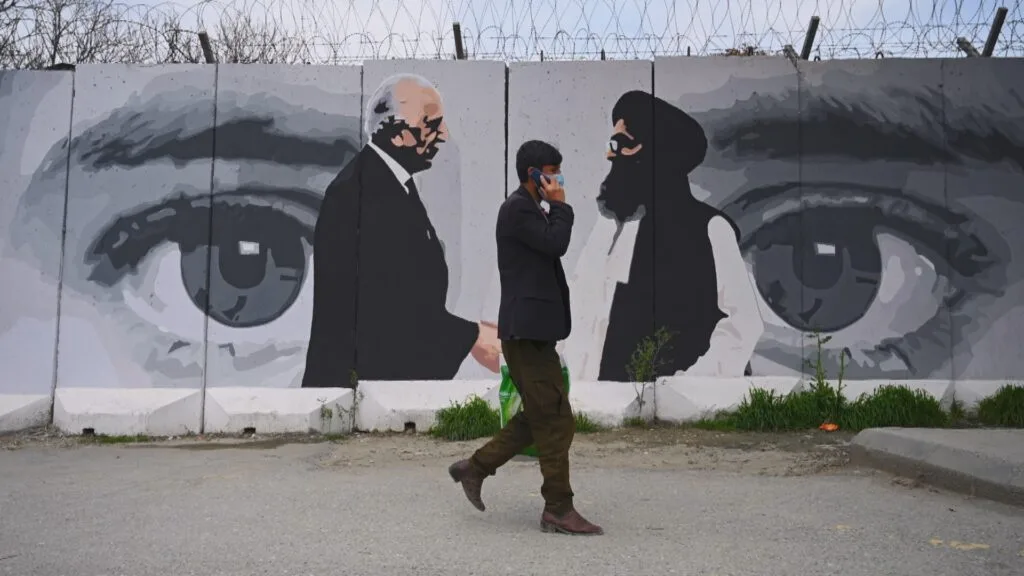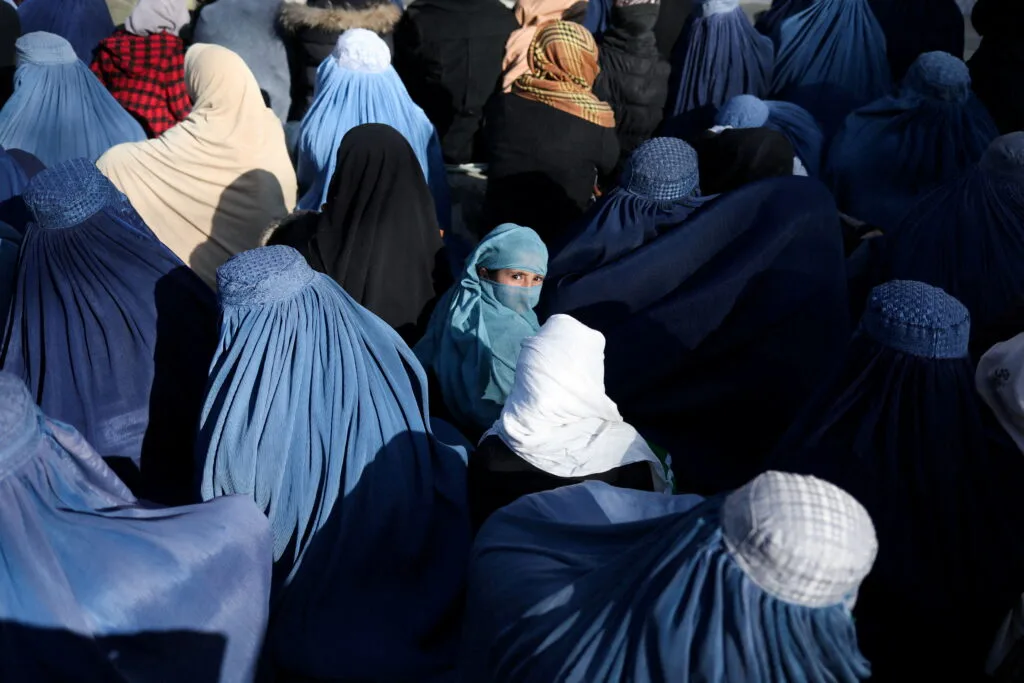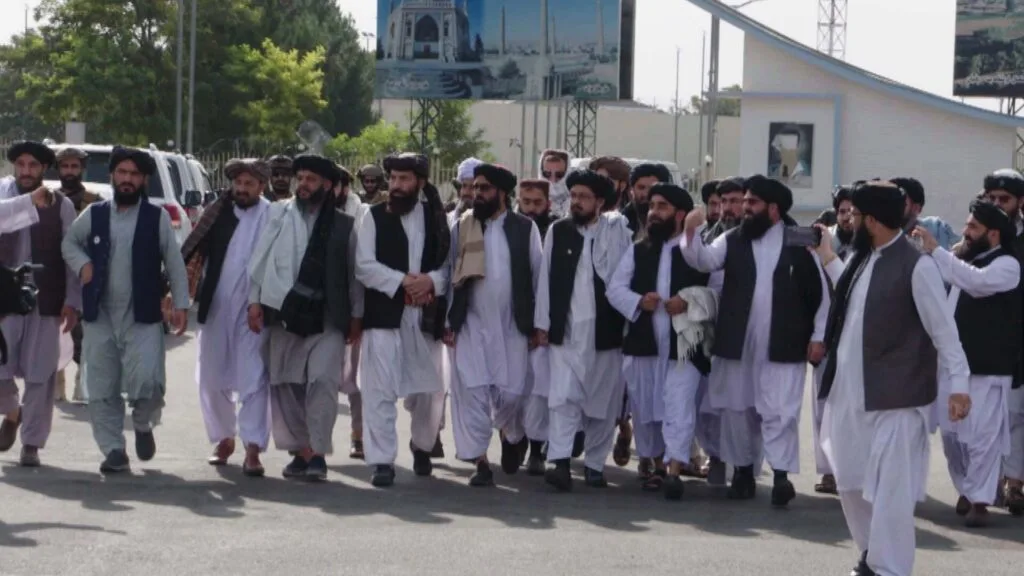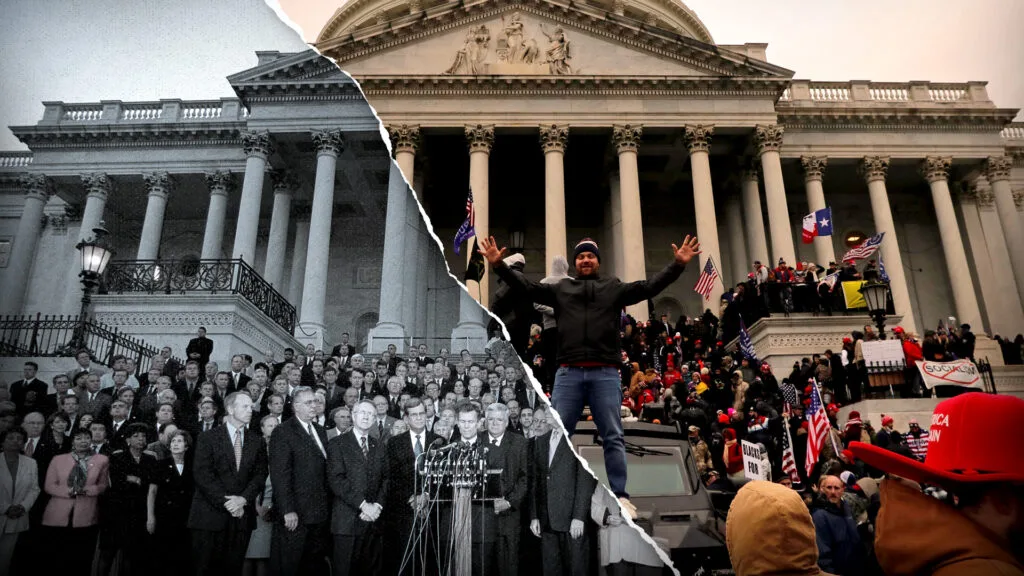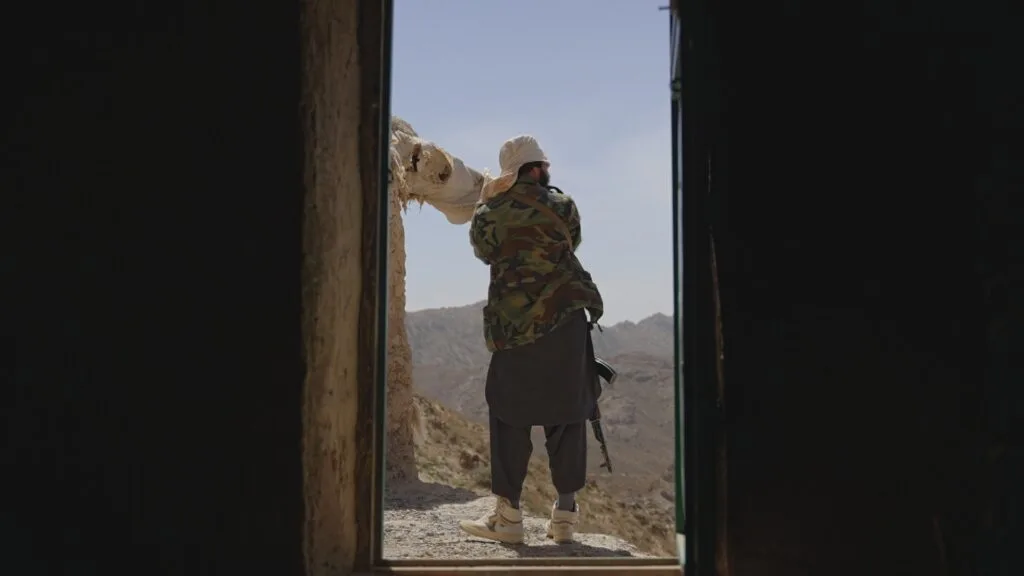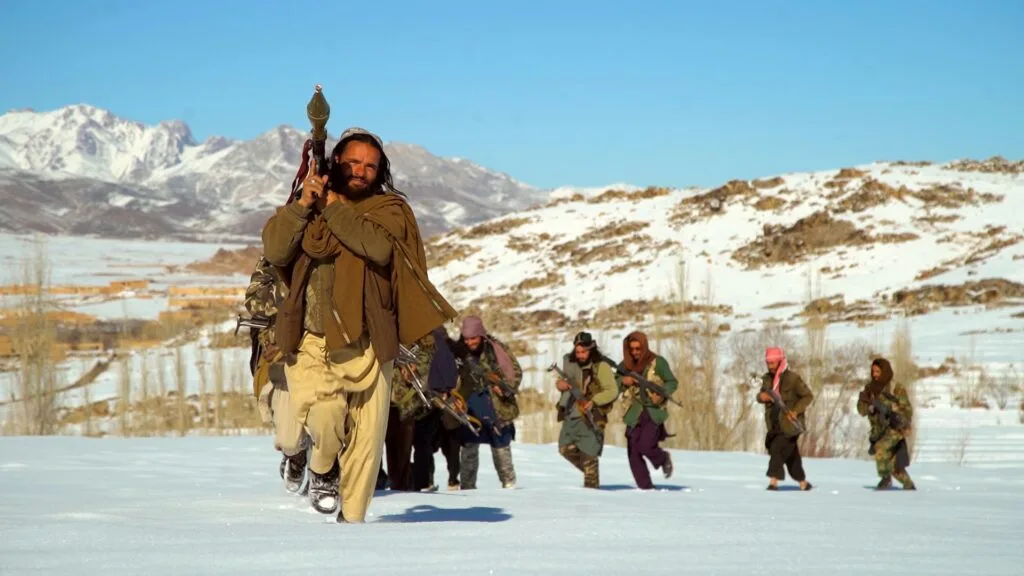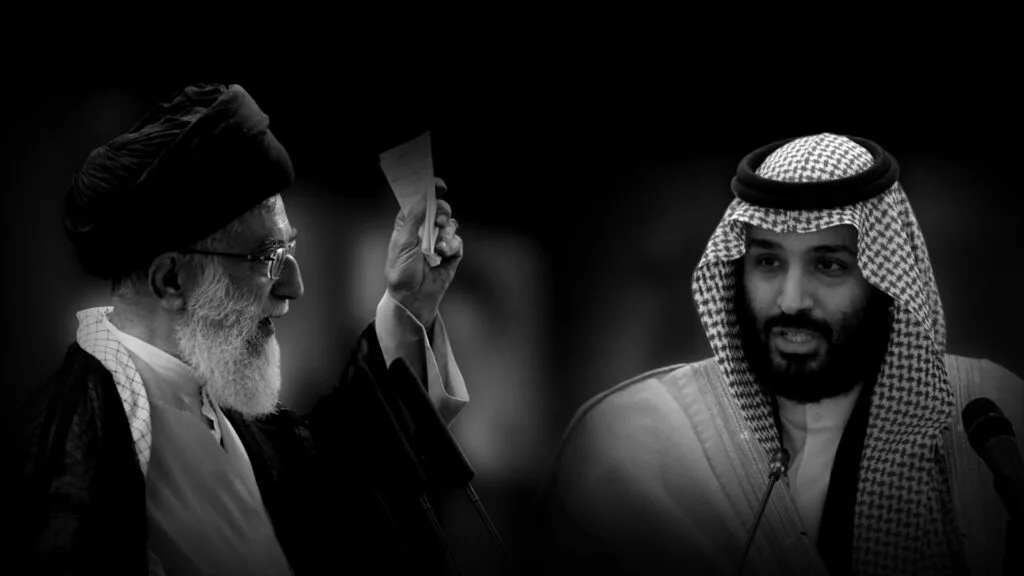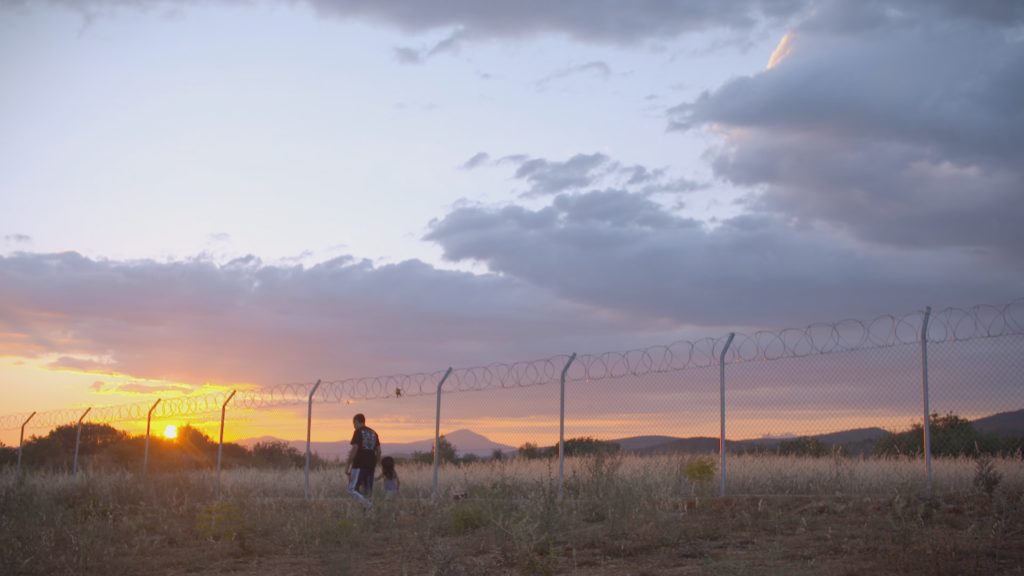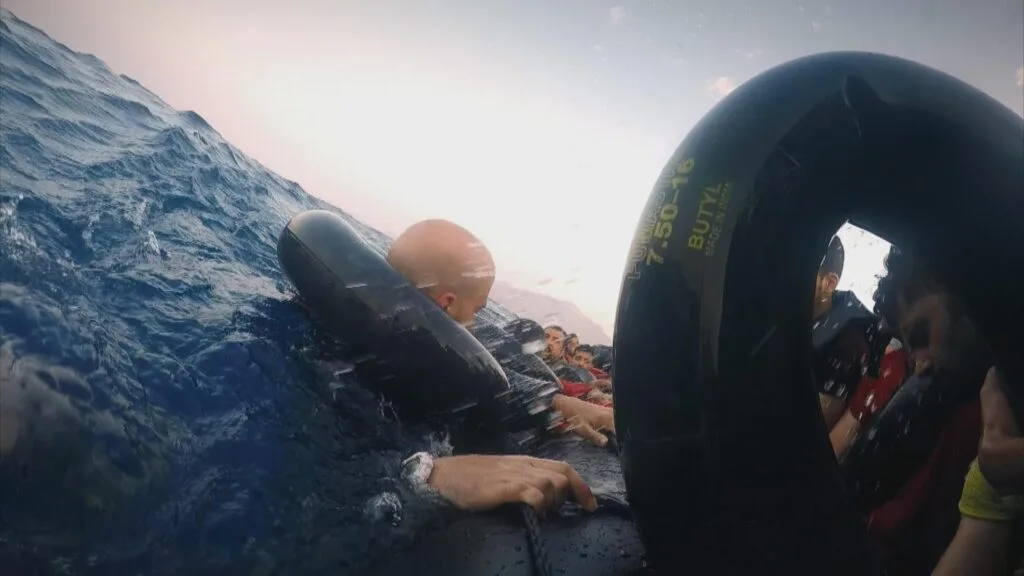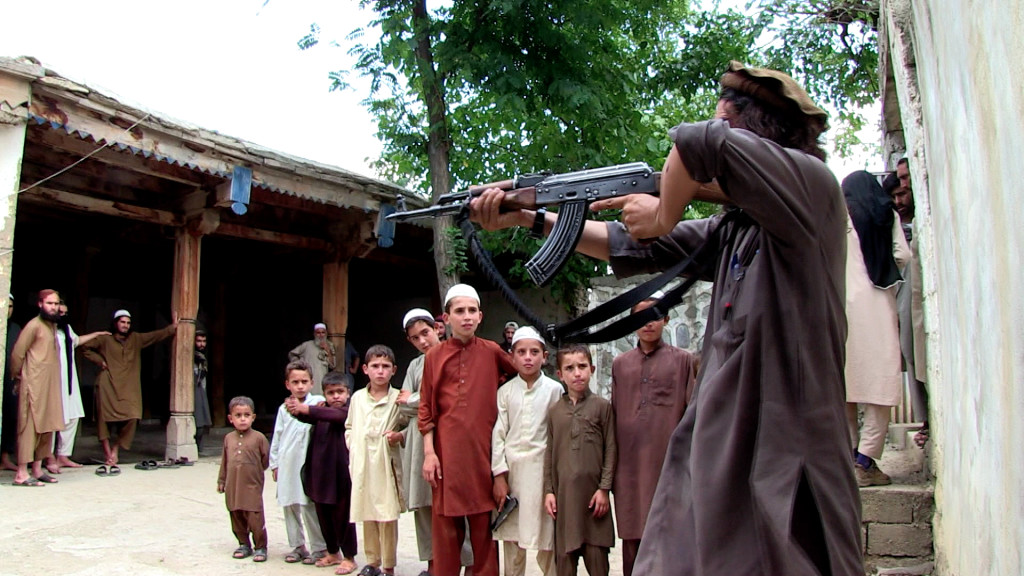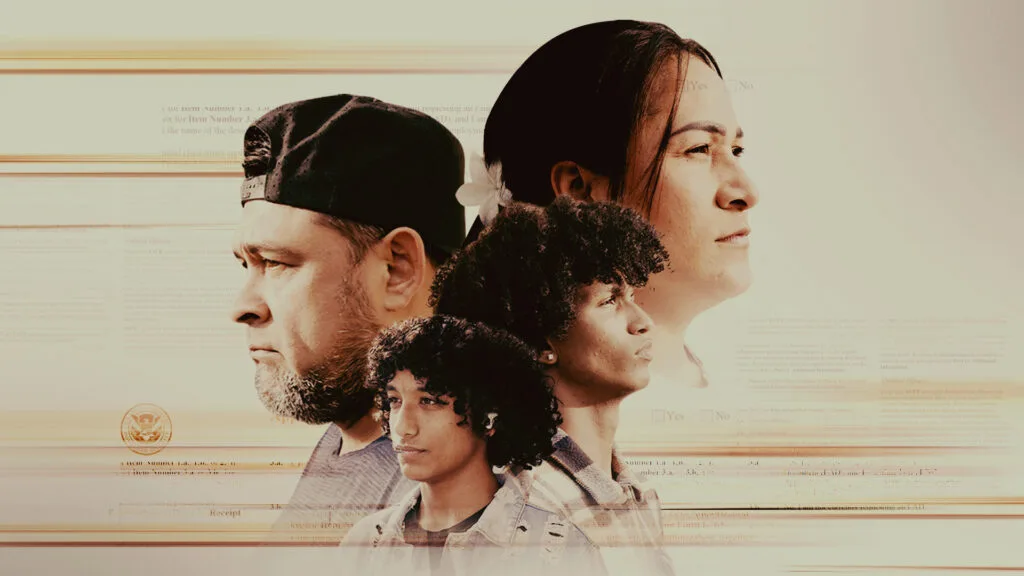Afghanistan, Two Years After: Taliban Repression and Humanitarian Crises Intensify
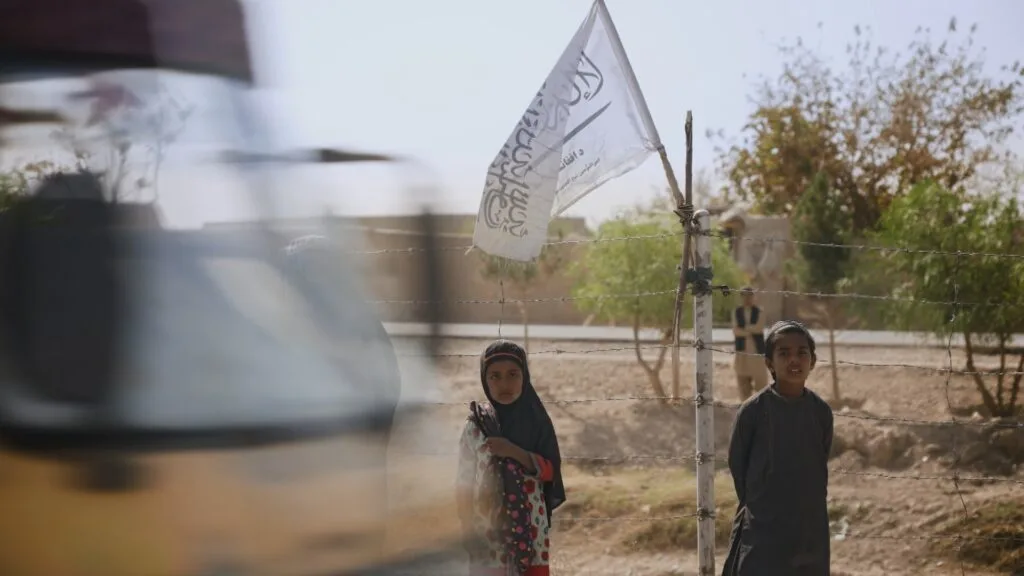
August 15, 2023
Share
On Aug. 15, 2021, the Taliban took back control of Afghanistan following a brutal two-decade war against the U.S.-led coalition and Afghan forces. FRONTLINE’s three-part documentary series America and the Taliban examined how America’s 20-year war in the country culminated in Taliban victory.
Here, we take a closer look at the state of Afghanistan — from the economy to women’s rights and humanitarian crises — two years after the takeover.
Economy: ‘Middle Class Falling into Poverty’
Afghanistan’s economy was deteriorating even before the Taliban seized control, but the economy fell into steep decline in the months following the August 2021 takeover. International assistance was paused and cut back, the country’s central bank was isolated from the international banking system and the U.S. froze billions of dollars in Afghan central bank reserves, preventing funds from falling into the Taliban’s hands.
Read more: ‘Brink of Collapse’: How Frozen Assets & Halted Foreign Aid Are Impacting the Afghan People
As some aid re-started by mid-2022, the World Bank said that the economy was stabilizing around a “fragile low-level equilibrium,” but two-thirds of Afghan households still couldn’t afford food and other basic needs.
Job opportunities for both skilled and unskilled workers increased starting in March 2023 compared to a year prior, according to the World Bank. As of May, Afghans have been able to withdraw more of their savings since the central bank eased withdrawal limits that were imposed after the Taliban took over. However, despite slight improvements, it’s estimated that more Afghans are living in poverty now than before the takeover. Around 19 million Afghans lived below the poverty line in 2020, according to a United Nations Development Programme report from April 2023. By the end of 2022, UNDP estimated that the number had grown to 34 million Afghans — an increase of 15 million.
“The worsened economy is pushing more and more people into a humanitarian crisis,” Samira Sayed-Rahman, director of policy, advocacy and communications at International Rescue Committee (IRC), told FRONTLINE. “We have seen more and more middle class falling into poverty, having to rely on humanitarian assistance.”
‘Gigantic Shortfall’ in Humanitarian Aid
Hunger has also worsened since 2021, experts said. More than 17 million Afghans did not have enough food to eat in April 2023 with 3.4 million of them just a step away from famine, according to The Integrated Food Security Phase Classification (IPC).
“We have seen increases in malnutrition across the country,” Sayed-Rahman said, describing the country as having some of the “highest levels of malnutrition on the planet.”
This year, more than 28 million people are in need of humanitarian assistance, according to the UNHCR, a huge spike compared to the 18.4 million people in need in early 2021. That assistance can encompass food, shelter, water, cash assistance and health or sanitation support.
Even as more people are in need, there has been “a gigantic shortfall” in the amount of aid available for Afghan people, according to International Crisis Group’s senior analyst Graeme Smith. Of the $3.2 billion that the United Nations has appealed for Afghan humanitarian aid this year, only 25% has been funded.
In an April 2023 statement, Taliban spokesperson Zabihullah Mujahid blamed the international community’s financial restrictions, asset freezes and sanctions for Afghanistan’s humanitarian crisis, according to Reuters.
Read more: Humanitarian Needs in Afghanistan Deepen as Taliban Continues Ban on Women Working for NGOs, UN
Crackdown on Women’s Rights ‘Steadily’ Worsens
When the Taliban took over, they vowed to respect women’s rights “within the framework of Sharia.” Two years later, women’s rights and freedoms have been curtailed in Afghanistan.
As showcased in FRONTLINE’s documentary Afghanistan Undercover, women have faced harsh realities since the Taliban seized power. Women and girls have been barred from attending high school and university, and human rights advocates fear that primary school may be next. Although women are only allowed to be seen by female healthcare professionals, the Taliban has also banned women from taking medical school exams.
Women have been barred from entering public spaces like gyms, parks and public baths. They are required to follow a strict dress code and aren’t allowed to travel more than 46 miles (75 kilometers) without a male chaperone. Women’s employment has also been limited since they are no longer allowed to work in NGO offices and have been excluded from holding positions in public office.
In response to calls to reverse bans on women’s access to education and work, Taliban spokesperson Mujahid said in January 2023, “Countries and international organizations should understand the religious demands of our nation and not link humanitarian issues/aid to politics.”
“We’re actually seeing the crackdown on women’s rights continue to steadily worsen,” Heather Barr, Human Rights Watch’s associate director for its Women’s Rights Division, told FRONTLINE. “Things are going toward greater restrictions, not toward any kind of compromise.”
Read more: What’s the Status of Healthcare for Women in Afghanistan Under the Taliban?
Just this year, beauty salons, which Barr said employed 60,000 women, were also forced to close down. The crackdown on women has progressed to the point that UN experts characterized it as “gender apartheid” in a July 2023 report to the UN Human Rights Council.
“This is not the time to forget the Afghan people. The Afghan people are currently facing the worst crises they have ever faced,” Sayed-Rahman said. “We are moving towards a situation where many people across this country are going to die. We’re going to have more deaths as a result of the humanitarian crisis than the last 20 to 40 years of conflict.”
Watch the complete documentary series America and the Taliban:
Part 1:
Part 2:
Part 3:

Email:
janelle_malig@wgbh.orgRelated Documentaries
Latest Documentaries
Related Stories
Related Stories
Policies
Teacher Center
Funding for FRONTLINE is provided through the support of PBS viewers and by the Corporation for Public Broadcasting. Additional funding is provided by the Abrams Foundation; Park Foundation; the John D. and Catherine T. MacArthur Foundation; and the FRONTLINE Journalism Fund with major support from Jon and Jo Ann Hagler on behalf of the Jon L. Hagler Foundation, and additional support from Koo and Patricia Yuen. FRONTLINE is a registered trademark of WGBH Educational Foundation. Web Site Copyright ©1995-2025 WGBH Educational Foundation. PBS is a 501(c)(3) not-for-profit organization.
